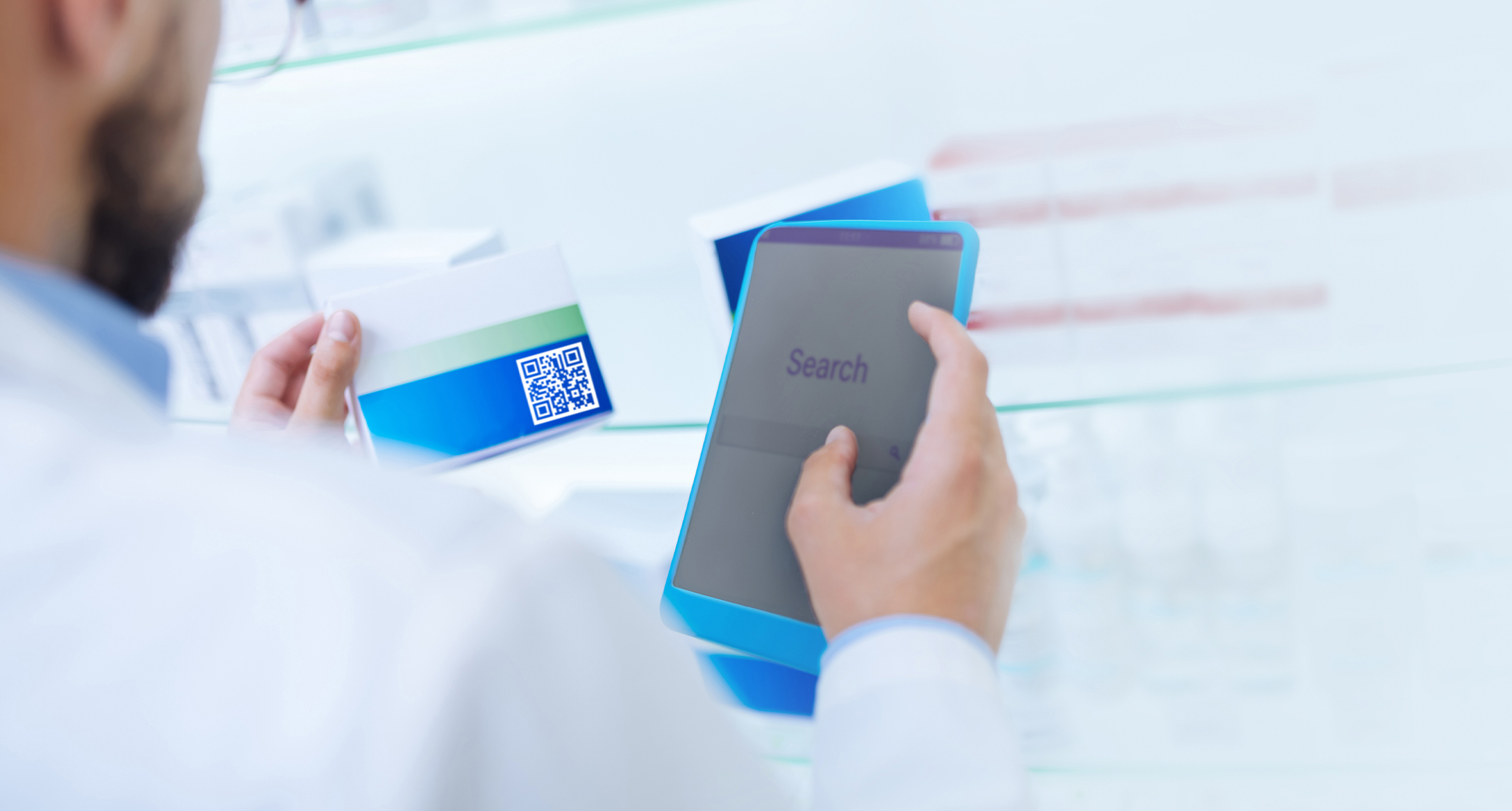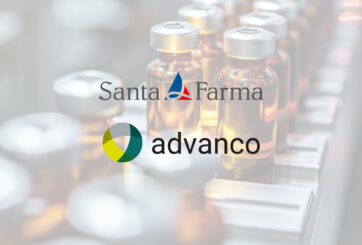The Transition to Paperless E-labelling in Pharma Packaging
Pharmaceutical firms are on a constant quest to streamline their operations and increase efficiency, especially against today’s turbulent economic and business backdrop.

Advanco has written extensively over recent years on how track and trace can achieve this efficiency. It does this by linking the essential components that modern pharmaceutical businesses need to thrive. These include operational shop floor efficiency, greater warehouse automation, optimizing data which will further streamline the supply chain, and creating customer engagement through product identification.
As part of our commitment to being one of the globe’s leading sources of knowledge on these vital topics, we always keep an eye out for new developments within the pharma supply chain. This is an important aspect of our role. After all, if something is gaining traction, it is doing so for a reason – and could potentially become the next vital component that needs to be incorporated into the track and trace process.
One of these developments is the move to paperless e-labelling. It is becoming more high-profile, including moves from the UK government to enable businesses to benefit from reduced costs and burdens as import labels are made digital for the first time.
Many other countries are also focused on promoting electronic alternatives to the traditional physical inserts with small print that have been commonly used with medicines and medical devices for as long as we can remember.
In Europe, the European Medicines Agency (EMA) is piloting e-labelling for prescription drugs in parallel with physical labelling. Meanwhile, the US Food and Drug Administration (FDA) DailyMed searchable database, which was established in 2006 with just one electronic label, today has over 140,000 labelling documents for those products within the brief of the FDA.
Therefore, we strongly feel e-labelling is “one to watch” over the coming months and feel the topic is worthy of this extensive analysis article.
What is paperless e-labelling?
Although there is, yet, no universal definition of e-labelling, it is widely accepted that the term refers to product information that is distributed via electronic means, rather than through traditional printed labels or packaging.
This can include using QR codes, barcodes, RFID (Radio-Frequency Identification) tags, or other digital technologies to allow consumers to access information about a product via their smartphones, tablets, or other devices.
E-labelling can provide more extensive and dynamic information than traditional labels, as well as potentially reducing waste associated with printed materials. It’s often used for products with complex or changing information requirements, making it ideal for the pharmaceutical and life sciences sector.
Overall, digital labelling offers numerous benefits for the pharmaceutical sector, including improved accessibility, real-time updates, cost savings, compliance with regulatory requirements, enhanced patient engagement, and environmental sustainability. This article will take a very brief look at some of these benefits in more detail.
Improved compliance
Overall, digital labelling offers a comprehensive suite of tools and capabilities that promote compliance in the pharmaceutical industry.
These benefits help pharmaceutical companies ensure that their product labels meet regulatory standards and requirements, ultimately contributing to patient safety and regulatory compliance. Let’s look in more detail.
-Version Control: Digital labelling systems enable precise version control, ensuring that only approved versions of product labels are disseminated. This helps prevent errors and discrepancies that may arise from using outdated or unauthorized labelling information, thereby maintaining compliance with regulatory requirements.
-Audit Trails: Digital labelling platforms often include robust audit trail capabilities, which record every change made to a label along with user authentication and timestamps. These audit trails provide transparency and accountability, allowing regulatory authorities to trace the entire history of label revisions and ensuring compliance with documentation and reporting requirements.
-Electronic Submission: Many regulatory agencies now accept electronic submissions of labelling documents, eliminating the need for paper-based submissions. Digital labelling systems facilitate the creation, management, and submission of electronic labelling files in formats compatible with regulatory requirements, simplifying the regulatory submission process and enhancing compliance.
-Integration with Regulatory Databases: Digital labelling platforms can integrate with regulatory databases and repositories, facilitating seamless access to regulatory guidance, templates, and updates. This integration ensures that labelling content aligns with regulatory expectations and streamlines compliance efforts by providing direct access to relevant regulatory resources within the labelling workflow.
-Global Harmonization: Digital labelling supports global harmonization initiatives by enabling the creation of standardized labelling templates that comply with multiple regulatory jurisdictions. Pharmaceutical companies can leverage digital labelling systems to generate region-specific labels while maintaining consistency in core labeling content, thereby simplifying compliance with diverse regulatory requirements across different markets.
Accessibility
Digital labelling makes information readily accessible to healthcare professionals, patients, and regulatory agencies. This accessibility can improve patient safety by providing accurate and up-to-date information about medications. Here’s how digital labelling makes information accessible:
-Comprehensive Information: Digital labelling allows for the inclusion of comprehensive information about medical products, including dosing instructions, indications, contraindications, side effects, precautions, and interactions with other drugs or conditions. This comprehensive information helps healthcare professionals make informed decisions about the use of these products for their patients.
-Search and Filter Capabilities: Digital labelling platforms often include search and filter capabilities, allowing healthcare professionals to quickly find the information they need within large volumes of data. This makes it easier for them to locate specific information relevant to their patient’s condition or treatment regimen.
-Integration with Clinical Workflow: Digital labelling can be integrated seamlessly into the clinical workflow of healthcare professionals. For example, digital labels can be accessed directly within EHR systems, allowing healthcare providers to review important information without having to switch between different applications or platforms.
-Customization: Digital labelling platforms often allow for customization based on the needs and preferences of individual healthcare professionals or healthcare organizations. This may include the ability to personalize the display of information, set preferences for alerts or notifications, or create custom protocols or guidelines.
-Accessibility: Digital labelling can be accessed from various devices, including computers, tablets, and smartphones, making it convenient for healthcare professionals to access information regardless of their location or the device they are using.
-Enhanced Patient Safety: By providing accurate and up-to-date information about medical products, digital labelling contributes to enhanced patient safety. Healthcare professionals can use this information to identify and mitigate potential risks associated with the use of these products, ultimately improving patient outcomes.
Real-time updates
Digital labeling allows for real-time updates to product information.
This means that any changes, such as updates to safety information or dosing instructions, can be quickly disseminated to healthcare professionals and patients, reducing the risk of outdated or incorrect information. The typical process involves the following:
-Centralized Database: Information about the product, such as ingredients, expiration dates, instructions, etc., is stored in a centralized database.
-Connected Devices: Each product is equipped with a digital label, which could be an electronic ink display, a QR code, an RFID tag, or another type of digital identifier. These labels are connected to the centralized database via the internet or other network connections.
-Real-Time Access: Whenever someone interacts with the product, whether it’s a consumer scanning a QR code with their smartphone or a store employee using a scanner, the digital label communicates with the centralized database to retrieve the most up-to-date information.
-Updates: If there are any changes to the product information, such as a recall, a change in ingredients, or updated usage instructions, these changes can be instantly reflected in the database. Therefore, whenever the digital label is accessed, it retrieves the most current information available.
-Feedback Loop: In some cases, digital labelling systems also allow for feedback from consumers or retailers. This could include reporting issues with the product, providing reviews, or suggesting improvements. This feedback can then be used to update the product information or make other relevant changes.
Cost savings
Digital labelling eliminates the need for traditional paper-based labelling, which can be expensive to print and distribute. Instead, companies can distribute digital labels electronically, saving on printing, packaging, and shipping expenses.
With digital labelling, updates and revisions can be made quickly and easily compared to traditional printed labels. This reduces the cost associated with printing new batches of labels every time a change is needed, as well as the cost of disposing of outdated labels.
Overall, digital labelling enables better tracking and tracing of pharmaceutical products throughout the supply chain. This can lead to cost savings by reducing the risk of counterfeit products, minimizing product loss or expiration, and optimizing inventory management.
E-labelling and ESG
By reducing the need for paper-based labelling, digital labelling can have a positive impact on the environment by reducing paper waste and the associated environmental footprint of pharmaceutical manufacturing and distribution processes.
Indeed, one of the main benefits of e-labelling is its potential to reduce waste and promote sustainability, as traditional labels are often difficult to recycle. E-labelling uses digital technology to display information on a screen or other electronic devices.
The UN Charter on sustainable development is a clear example of moves that are being established to ensure a safer and more responsible world which we can all enjoy. Advanco is a strong champion of the Charter, and we wholeheartedly feel that all pharma firms have a duty to be familiar with its contents and should be doing all they can to adhere to them.
With e-labelling already having a beneficial impact when it comes to ESG, and with pharma firms increasingly expected to ramp up their ESG initiatives, we feel this is another reason that e-labelling will rapidly rise in prominence very shortly.
Conclusion
The benefits of e-labelling are clear to see for the pharma sector.
Overall, the future of pharmaceutical digital labelling is expected to revolutionize drug information dissemination, patient care, and supply chain management, while also addressing emerging challenges related to technology adoption, regulatory compliance, and cybersecurity.
Advanco strongly expects to see the concept make rapid inroads into the packaging lines of pharma producers across the globe. After all, the groundwork has already been laid with the advent of Industry 4.0. and the rise of hyper-connected smart machines, powered by the cloud.
E-labelling, track and trace and the future? You have heard it here first. Watch this space.



